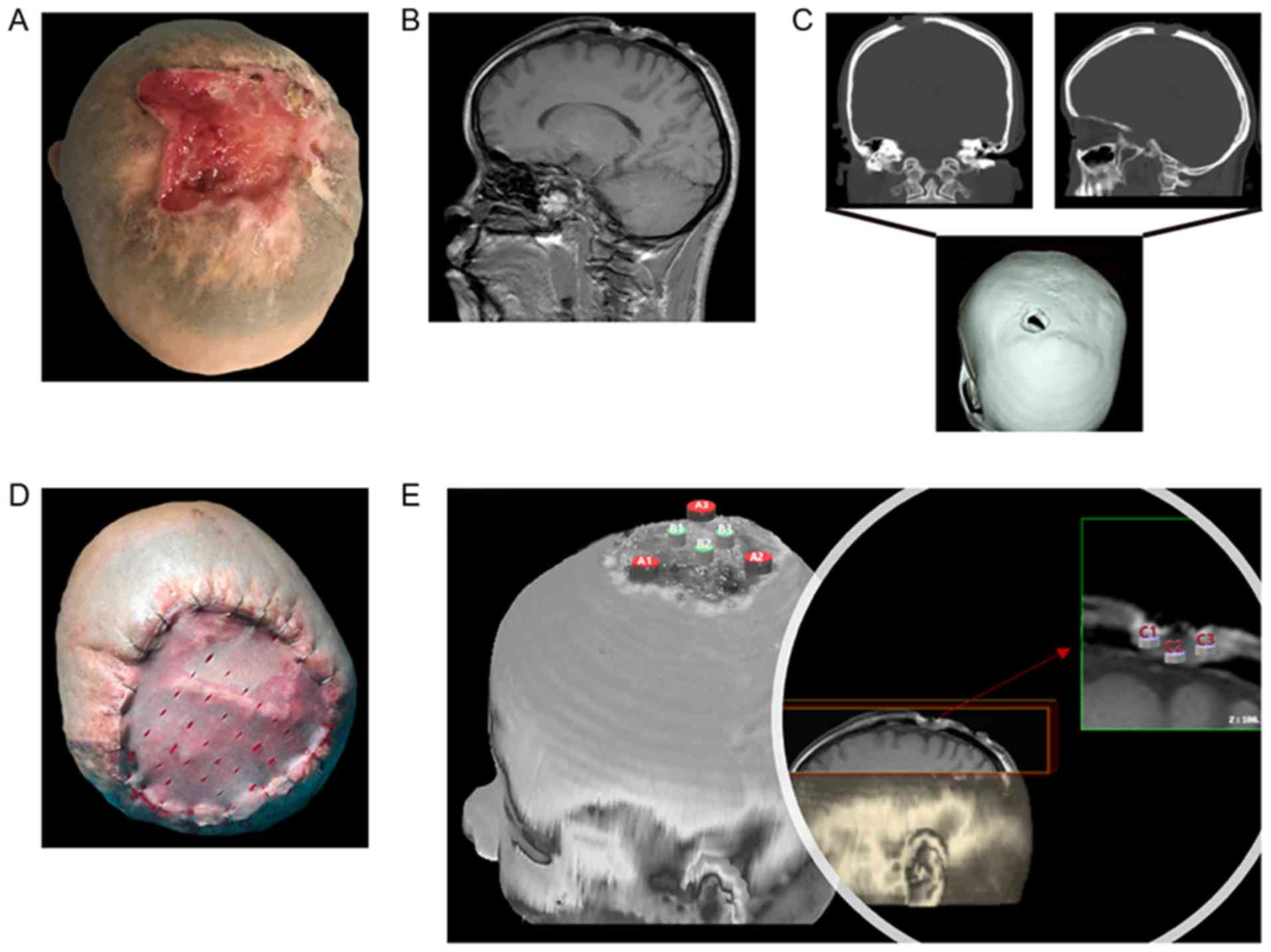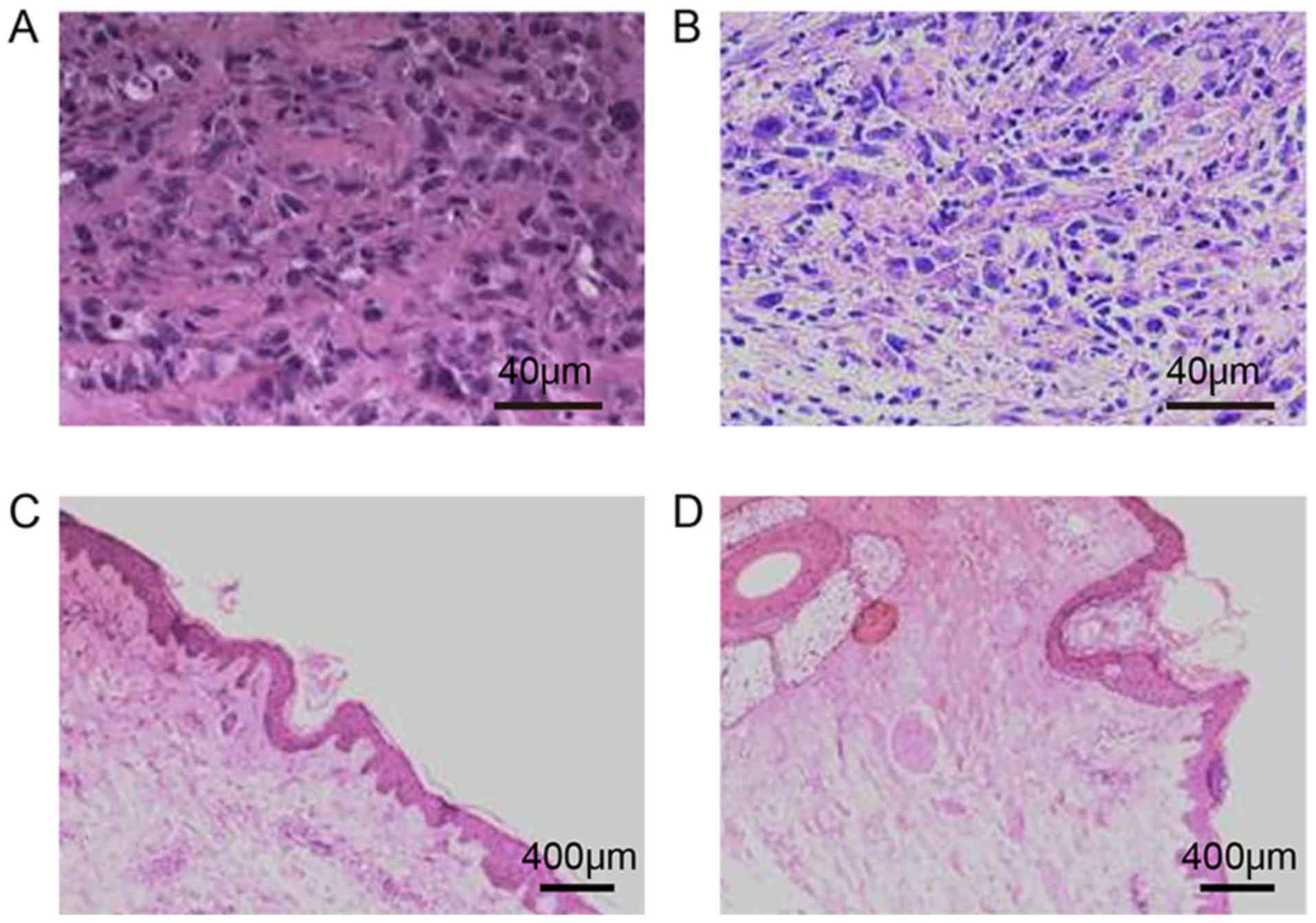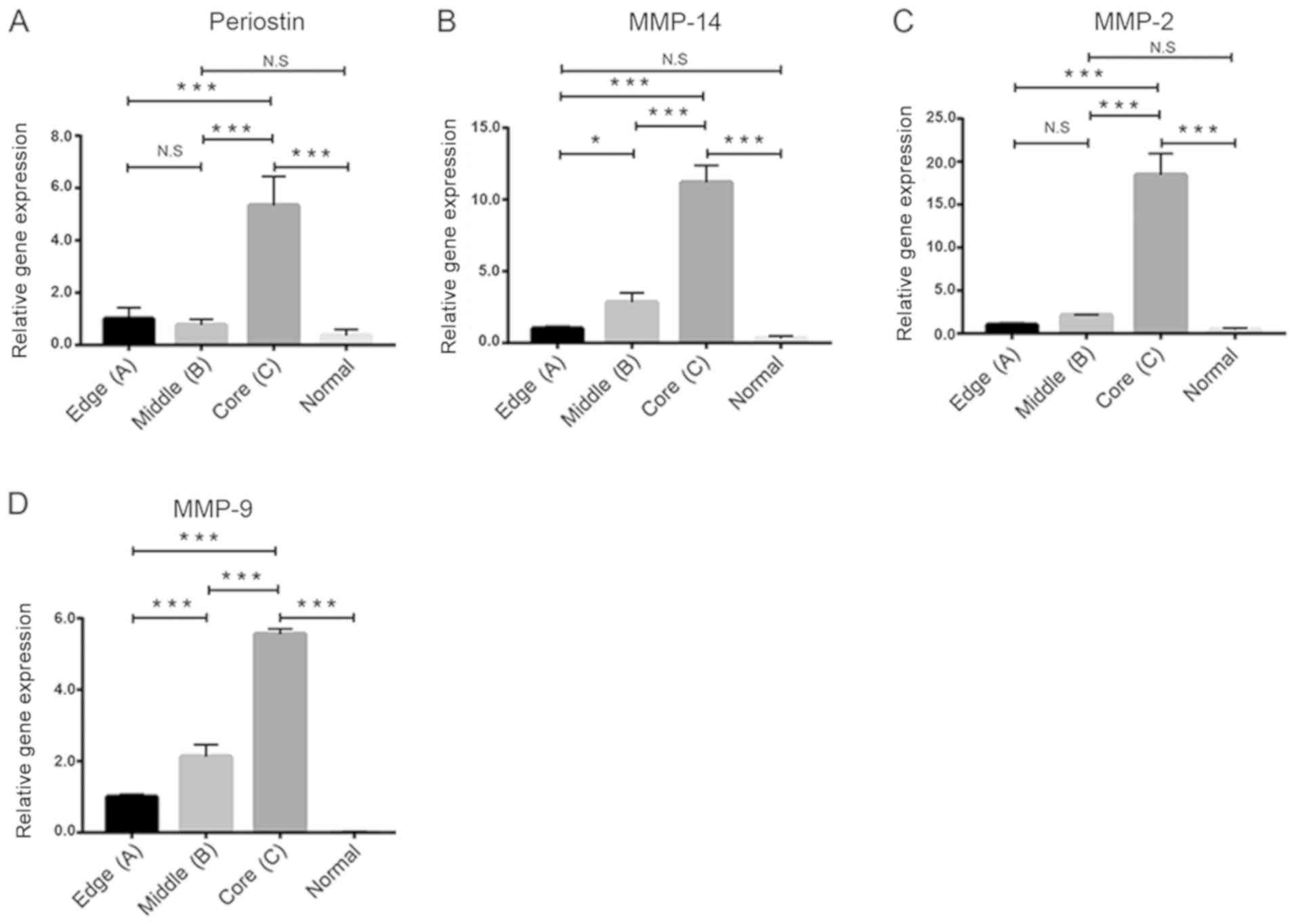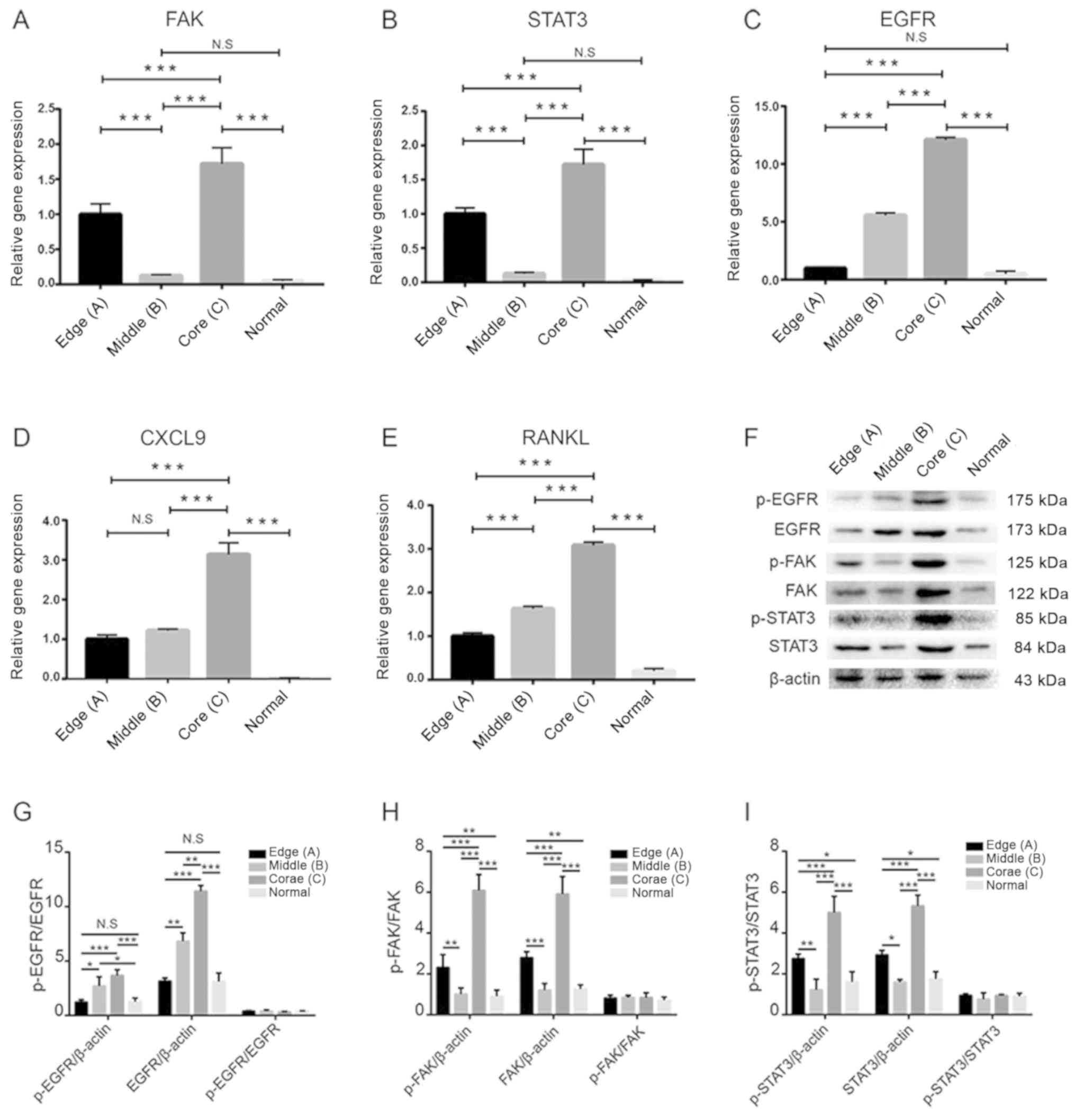|
1
|
Yu N, Long X, Lujan-Hernandez JR, Hassan
KZ, Bai M, Wang Y, Wang X and Zhao R: Marjolin's ulcer: A
preventable malignancy arising from scars. World J Surg Oncol.
11(313)2013.PubMed/NCBI View Article : Google Scholar
|
|
2
|
Saaiq M and Ashraf B: Marjolin's ulcers in
the post-burned lesions and scars. World J Clin Cases. 2:507–514.
2014.PubMed/NCBI View Article : Google Scholar
|
|
3
|
Copcu E: Marjolin's ulcer: A preventable
complication of burns? Plast Reconstr Surg. 124:156e–164e.
2009.PubMed/NCBI View Article : Google Scholar
|
|
4
|
Cocchetto V, Magrin P, de Paula RA, Aidé
M, Monte Razo L and Pantaleão L: Squamous cell carcinoma in chronic
wound: Marjolin ulcer. Dermatol Online J. 19(7)2013.PubMed/NCBI
|
|
5
|
Huang CY, Feng CH, Hsiao YC, Chuang SS and
Yang JY: Burn scar carcinoma. J Dermatolog Treat. 21:350–356.
2010.PubMed/NCBI View Article : Google Scholar
|
|
6
|
Gül U and Kiliç A: Squamous cell carcinoma
developing on burn scar. Ann Plast Surg. 56:406–408.
2006.PubMed/NCBI View Article : Google Scholar
|
|
7
|
Takada H, Ibaragi S, Eguchi T, Okui T,
Obata K, Masui M, Morisawa A, Takabatake K, Kawai H, Yoshioka N, et
al: Semaphorin 4D promotes bone invasion in head and neck squamous
cell carcinoma. Int J Oncol. 51:625–632. 2017.PubMed/NCBI View Article : Google Scholar
|
|
8
|
Siriwardena SBSM, Tsunematsu T, Qi G,
Ishimaru N and Kudo Y: Invasion-related factors as potential
diagnostic and therapeutic targets in oral squamous cell
carcinoma-a review. Int J Mol Sci. 19(1462)2018.PubMed/NCBI View Article : Google Scholar
|
|
9
|
Glentis A, Gurchenkov V and Matic
Vignjevic D: Assembly, heterogeneity, and breaching of the basement
membranes. Cell Adh Migr. 8:236–245. 2014.PubMed/NCBI View Article : Google Scholar
|
|
10
|
Obayashi M, Yoshida M, Tsunematsu T, Ogawa
I, Sasahira T, Kuniyasu H, Imoto I, Abiko Y, Xu D, Fukunaga S, et
al: microRNA-203 suppresses invasion and epithelial-mesenchymal
transition induction via targeting NUAK1 in head and neck cancer.
Oncotarget. 7:8223–8239. 2016.PubMed/NCBI View Article : Google Scholar
|
|
11
|
Witz IP: The tumor microenvironment: The
making of a paradigm. Cancer Microenviron. 2 (Suppl 1):9–17.
2009.PubMed/NCBI View Article : Google Scholar
|
|
12
|
Hu J, Chen L, Huang X, Wu K, Ding S, Wang
W, Wang B, Smith C, Ren C, Ni H, et al: Calpain inhibitor MDL28170
improves the transplantation-mediated therapeutic effect of bone
marrow-derived mesenchymal stem cells following traumatic brain
injury. Stem Cell Res Ther. 10(96)2019.PubMed/NCBI View Article : Google Scholar
|
|
13
|
Ni H, Yang S, Siaw-Debrah F, Hu J, Wu K,
He Z, Yang J, Pan S, Lin X, Ye H, et al: Exosomes derived from bone
mesenchymal stem cells ameliorate early inflammatory responses
following traumatic brain injury. Front Neurosci.
13(14)2019.PubMed/NCBI View Article : Google Scholar
|
|
14
|
Ding S, Zhuge W, Hu J, Yang J, Wang X, Wen
F, Wang C and Zhuge Q: Baicalin reverses the impairment of
synaptogenesis induced by dopamine burden via the stimulation of
GABAAR-TrkB interaction in minimal hepatic
encephalopathy. Psychopharmacology (Berl). 235:1163–1178.
2018.PubMed/NCBI View Article : Google Scholar
|
|
15
|
Sinha S, Su S, Workentine M, Agabalyan N,
Cheng M, Gabriel V and Biernaskie J: Transcriptional analysis
reveals evidence of chronically impeded ECM turnover and
epithelium-to-mesenchyme transition in scar tissue giving rise to
Marjolin's ulcer. J Burn Care Res. 38:e14–e22. 2017.PubMed/NCBI View Article : Google Scholar
|
|
16
|
Sherrill JD, Kc K, Wu D, Djukic Z,
Caldwell JM, Stucke EM, Kemme KA, Costello MS, Mingler MK,
Blanchard C, et al: Desmoglein-1 regulates esophageal epithelial
barrier function and immune responses in eosinophilic esophagitis.
Mucosal Immunol. 7:718–29. 2014.PubMed/NCBI View Article : Google Scholar
|
|
17
|
Dos Reis PP, Bharadwaj RR, Machado J,
Macmillan C, Pintilie M, Sukhai MA, Perez-Ordonez B, Gullane P,
Irish J and Kamel-Reid S: Claudin 1 overexpression increases
invasion and is associated with aggressive histological features in
oral squamous cell carcinoma. Cancer. 113:3169–3180.
2008.PubMed/NCBI View Article : Google Scholar
|
|
18
|
Oku N, Sasabe E, Ueta E, Yamamoto T and
Osaki T: Tight junction protein claudin-1 enhances the invasive
activity of oral squamous cell carcinoma cells by promoting
cleavage of laminin-5 gamma2 chain via matrix metalloproteinase
(MMP)-2 and membrane-type MMP-1. Cancer Res. 66:5251–5257.
2006.PubMed/NCBI View Article : Google Scholar
|
|
19
|
Tunggal JA, Helfrich I, Schmitz A, Schwarz
H, Günzel D, Fromm M, Kemler R, Krieg T and Niessen CM: E-cadherin
is essential for in vivo epidermal barrier function by regulating
tight junctions. EMBO J. 24:1146–1156. 2005.PubMed/NCBI View Article : Google Scholar
|
|
20
|
Huang CC, Lee TJ, Chang PH, Lee YS, Chuang
CC, Jhang YJ, Chen YW, Chen CW and Tsai CN: Desmoglein 3 is
overexpressed in inverted papilloma and squamous cell carcinoma of
sinonasal cavity. Laryngoscope. 120:26–29. 2010.PubMed/NCBI View Article : Google Scholar
|
|
21
|
de Vicente JC, Lequerica-Fernández P,
Santamaría J and Fresno MF: Expression of MMP-7 and MT1-MMP in oral
squamous cell carcinoma as predictive indicator for tumor invasion
and prognosis. J Oral Pathol Med. 36:415–424. 2007.PubMed/NCBI View Article : Google Scholar
|
|
22
|
Bodnar M, Szylberg L, Kazmierczak W and
Marszalek A: Differentiated expression of membrane type
metalloproteinases (MMP-14, MMP-15) and pro-MMP2 in laryngeal
squamous cell carcinoma. A novel mechanism. J Oral Pathol Med.
42:267–274. 2013.PubMed/NCBI View Article : Google Scholar
|
|
23
|
Kwon YJ, Lee SJ, Koh JS, Kim SH, Kim YJ
and Park JH: Expression patterns of aurora kinase B, heat shock
protein 47, and periostin in esophageal squamous cell carcinoma.
Oncol Res. 18:141–151. 2009.PubMed/NCBI View Article : Google Scholar
|
|
24
|
Reddy KB, Nabha SM and Atanaskova N: Role
of MAP kinase in tumor progression and invasion. Cancer Metastasis
Rev. 22:395–403. 2003.PubMed/NCBI View Article : Google Scholar
|
|
25
|
Samantaray S, Sharma R, Chattopadhyaya TK,
Gupta SD and Ralhan R: Increased expression of MMP-2 and MMP-9 in
esophageal squamous cell carcinoma. J Cancer Res Clin Oncol.
130:37–44. 2004.PubMed/NCBI View Article : Google Scholar
|
|
26
|
Yokoyama K, Kamata N, Fujimoto R, Tsutsumi
S, Tomonari M, Taki M, Hosokawa H and Nagayama M: Increased
invasion and matrix metalloproteinase-2 expression by Snail-induced
mesenchymal transition in squamous cell carcinomas. Int J Oncol.
22:891–898. 2003.PubMed/NCBI
|
|
27
|
Ibbetson SJ, Pyne NT, Pollard AN, Olson MF
and Samuel MS: Mechanotransduction pathways promoting tumor
progression are activated in invasive human squamous cell
carcinoma. Am J Pathol. 183:930–937. 2013.PubMed/NCBI View Article : Google Scholar
|
|
28
|
Kashyap MK, Marimuthu A, Peri S, Kumar GS,
Jacob HK, Prasad TS, Mahmood R, Kumar KV, Kumar MV, Meltzer SJ, et
al: Overexpression of periostin and lumican in esophageal squamous
cell carcinoma. Cancers (Basel). 2:133–142. 2010.PubMed/NCBI View Article : Google Scholar
|
|
29
|
Jimi E, Shin M, Furuta H, Tada Y and
Kusukawa J: The RANKL/RANK system as a therapeutic target for bone
invasion by oral squamous cell carcinoma (Review). Int J Oncol.
42:803–809. 2013.PubMed/NCBI View Article : Google Scholar
|
|
30
|
Kitazawa S and Kitazawa R: RANK ligand is
a prerequisite for cancer-associated osteolytic lesions. J Pathol.
198:228–236. 2002.PubMed/NCBI View Article : Google Scholar
|
|
31
|
Chuang FH, Hsue SS, Wu CW and Chen YK:
Immunohistochemical expression of RANKL, RANK, and OPG in human
oral squamous cell carcinoma. J Oral Pathol Med. 38:753–758.
2009.PubMed/NCBI View Article : Google Scholar
|
|
32
|
Murata T, Naomoto Y, Yamatsuji T, Okawa T,
Shirakawa Y, Gunduz M, Nobuhisa T, Takaoka M, Sirmali M, Nakajima
M, et al: Localization of FAK is related with colorectal
carcinogenesis. Int J Oncol. 32:791–796. 2008.PubMed/NCBI
|
|
33
|
Schober M and Fuchs E: Tumor-initiating
stem cells of squamous cell carcinomas and their control by TGF-β
and integrin/focal adhesion kinase (FAK) signaling. Proc Natl Acad
Sci USA. 108:10544–10549. 2011.PubMed/NCBI View Article : Google Scholar
|
|
34
|
Miyazaki T, Kato H, Nakajima M, Sohda M,
Fukai Y, Masuda N, Manda R, Fukuchi M, Tsukada K and Kuwano H: FAK
overexpression is correlated with tumour invasiveness and lymph
node metastasis in oesophageal squamous cell carcinoma. Br J
Cancer. 89:140–145. 2003.PubMed/NCBI View Article : Google Scholar
|
|
35
|
Grandis JR, Drenning SD, Zeng Q, Watkins
SC, Melhem MF, Endo S, Johnson DE, Huang L, He Y and Kim JD:
Constitutive activation of Stat3 signaling abrogates apoptosis in
squamous cell carcinogenesis in vivo. Proc Natl Acad Sci USA.
97:4227–4232. 2000.PubMed/NCBI View Article : Google Scholar
|
|
36
|
Kijima T, Niwa H, Steinman RA, Drenning
SD, Gooding WE, Wentzel AL, Xi S and Grandis JR: STAT3 activation
abrogates growth factor dependence and contributes to head and neck
squamous cell carcinoma tumor growth in vivo. Cell Growth Differ.
13:355–362. 2002.PubMed/NCBI
|
|
37
|
Rubin Grandis J, Melhem MF, Gooding WE,
Day R, Holst VA, Wagener MM, Drenning SD and Tweardy DJ: Levels of
TGF-alpha and EGFR protein in head and neck squamous cell carcinoma
and patient survival. J Natl Cancer Inst. 90:824–832.
1998.PubMed/NCBI View Article : Google Scholar
|
|
38
|
Hanawa M, Suzuki S, Dobashi Y, Yamane T,
Kono K, Enomoto N and Ooi A: EGFR protein overexpression and gene
amplification in squamous cell carcinomas of the esophagus. Int J
Cancer. 118:1173–1180. 2006.PubMed/NCBI View Article : Google Scholar
|
|
39
|
Li Z, Liu J, Li L, Shao S, Wu J, Bian L
and He Y: Epithelial mesenchymal transition induced by the
CXCL9/CXCR3 axis through AKT activation promotes invasion and
metastasis in tongue squamous cell carcinoma. Oncol Rep.
39:1356–1368. 2018.PubMed/NCBI View Article : Google Scholar
|



















